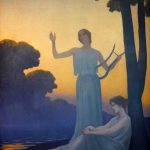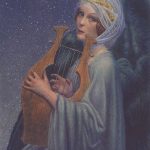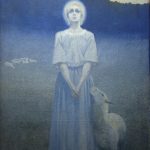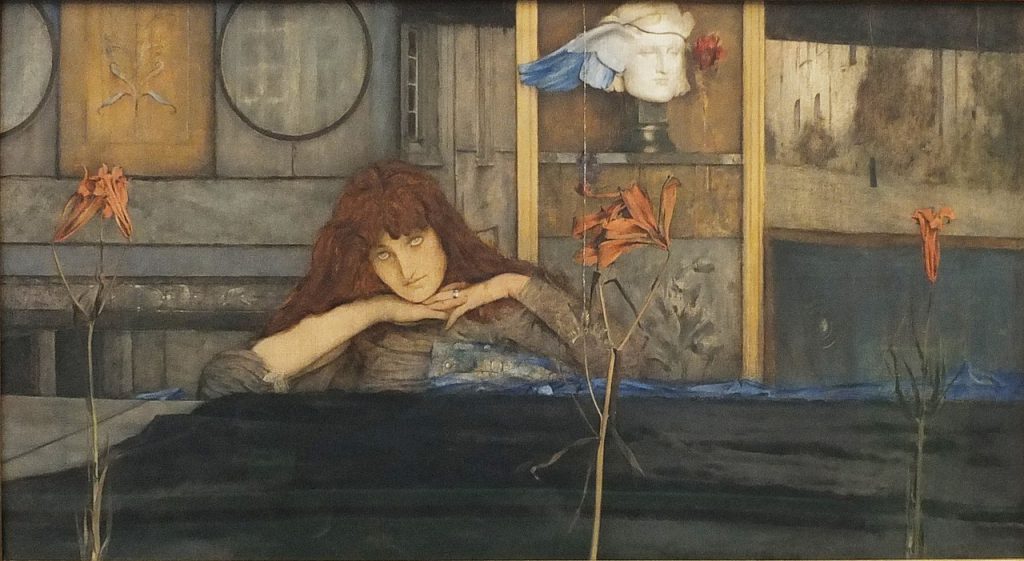
Fernand Khnopff, born on September 12, 1858, in Grembergen, Belgium, was a leading figure in the Symbolist movement, a pan-European development that sought to express the ineffable aspects of human experience through highly personal, often mystical imagery. Khnopff’s art is characterized by its dreamlike atmosphere, meticulous technique, and themes of memory, desire, and isolation, making him one of the most distinctive voices in late 19th-century art.
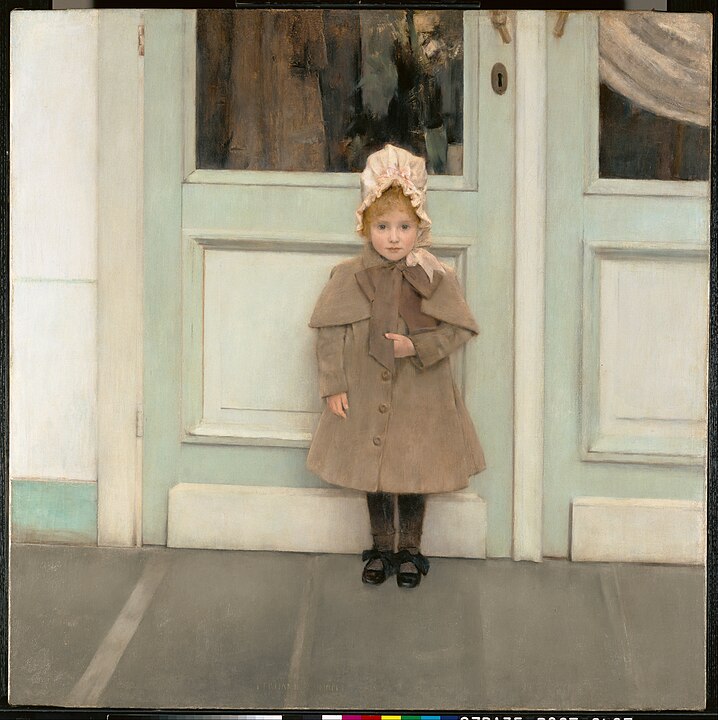
Khnopff grew up in a period of rapid social and industrial change, which influenced his turn towards the mystical and introspective themes that dominate his work. He studied law at the University of Brussels but soon abandoned this path to pursue art, enrolling at the Académie Royale des Beaux-Arts in Brussels. His education continued in Paris, where he was exposed to the latest trends in French art, including the work of the Pre-Raphaelites and Symbolists, whose emphasis on emotion and symbolism over realism deeply influenced him.
Central Figure
Upon returning to Belgium, Khnopff quickly became a central figure in the avant-garde circles, co-founding the group Les XX (The Twenty), which aimed to promote new art forms and ideas. Through Les XX, he was instrumental in introducing the Belgian public to the works of the Impressionists and Post-Impressionists, as well as to the Symbolist poetry and literature that resonated with his artistic inclinations.
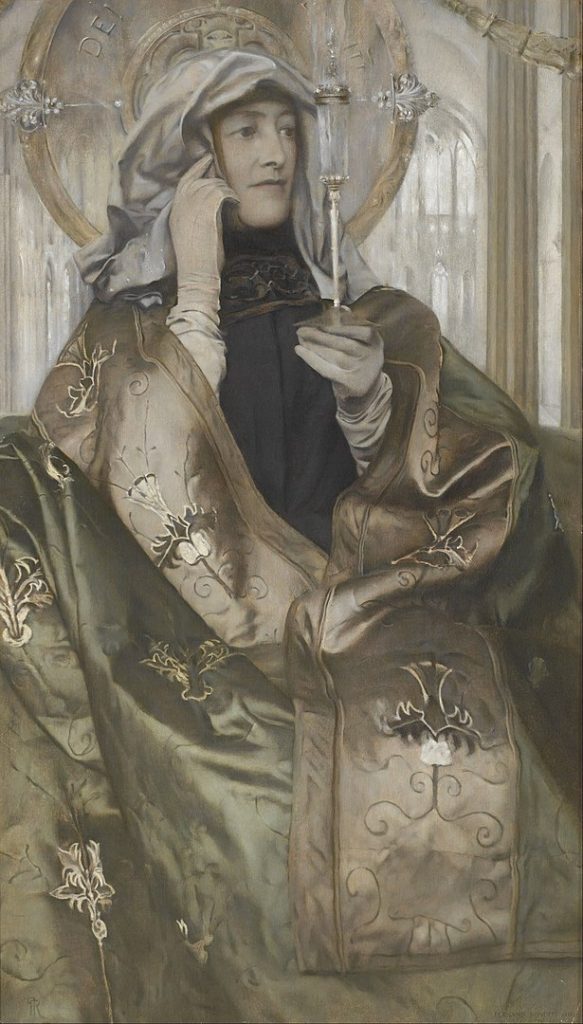
Khnopff’s work is notable for its serene, often eerie quality, achieved through the use of a limited palette, refined lines, and a smooth, almost enigmatic finish. His subjects, frequently drawn from mythology, literature, or his own imagination, are depicted in settings that are timeless and spaceless, evoking a sense of eternal stillness and introspection. One of his most iconic works, “I Lock My Door Upon Myself,” inspired by a poem by Christina Rossetti, showcases his ability to blend the real with the surreal, creating images that linger in the viewer’s mind as haunting evocations of inner life.
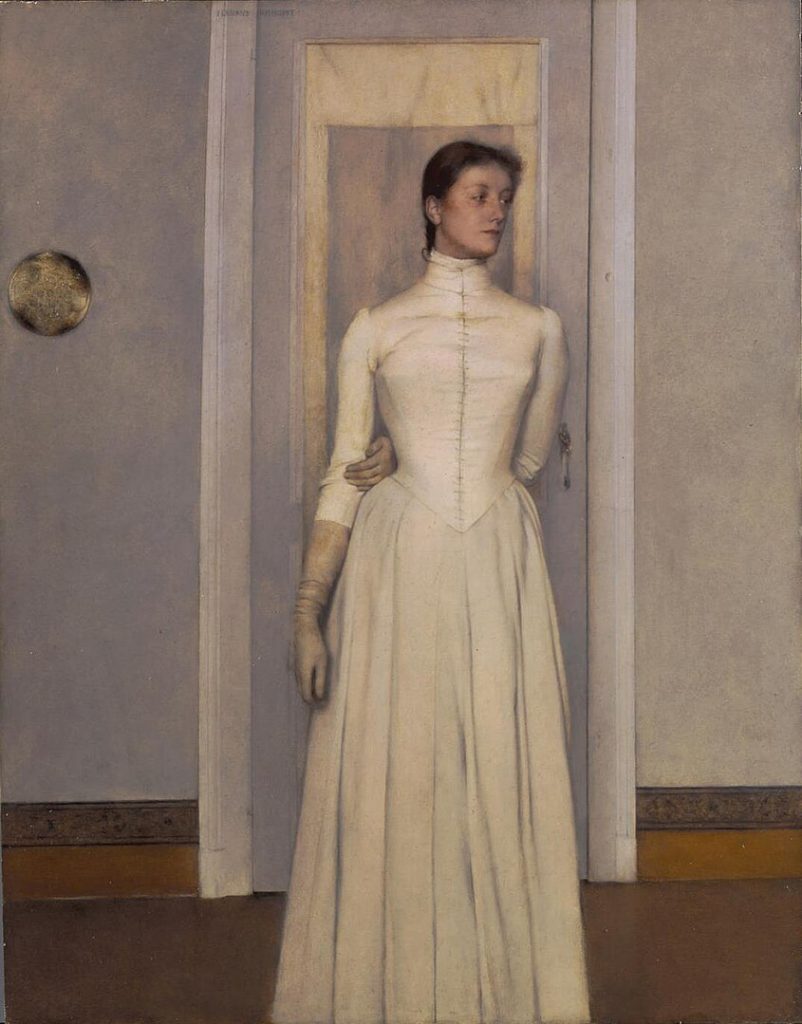
Khnopff was also fascinated with the theme of the androgynous or hermetic figure, often blurring gender lines in his portrayals to explore the complexities of identity and the duality of human nature. His representations of women, sometimes inspired by his sister Marguerite, are imbued with a sense of mystery and aloofness, reflecting his views on the unattainable and the ineffable.
Multi-Media Master
Beyond painting, Khnopff engaged in sculpture, photography, and design, applying his Symbolist vision to a wide range of media. His home in Brussels, designed by him as a total work of art, served both as a studio and as a manifestation of his aesthetic principles, integrating art and life into a seamless whole.
Despite his significant impact on the Symbolist movement and his influence on later artists, Khnopff’s work fell into relative obscurity in the mid-20th century, overshadowed by the rise of modernist and avant-garde movements that eschewed his brand of introspective symbolism. However, renewed interest in Symbolism towards the end of the century has led to a reevaluation of his contributions, placing him once again at the forefront of discussions on the role of the mystical and the spiritual in art.

Fernand Khnopff passed away on November 12, 1921, in Brussels, leaving behind a body of work that continues to captivate and intrigue. His exploration of the inner realms of the human psyche, through a language of symbols and dreams, endures as a powerful reminder of art’s capacity to delve into the depths of human experience, touching on universal themes of desire, memory, and the search for meaning.



